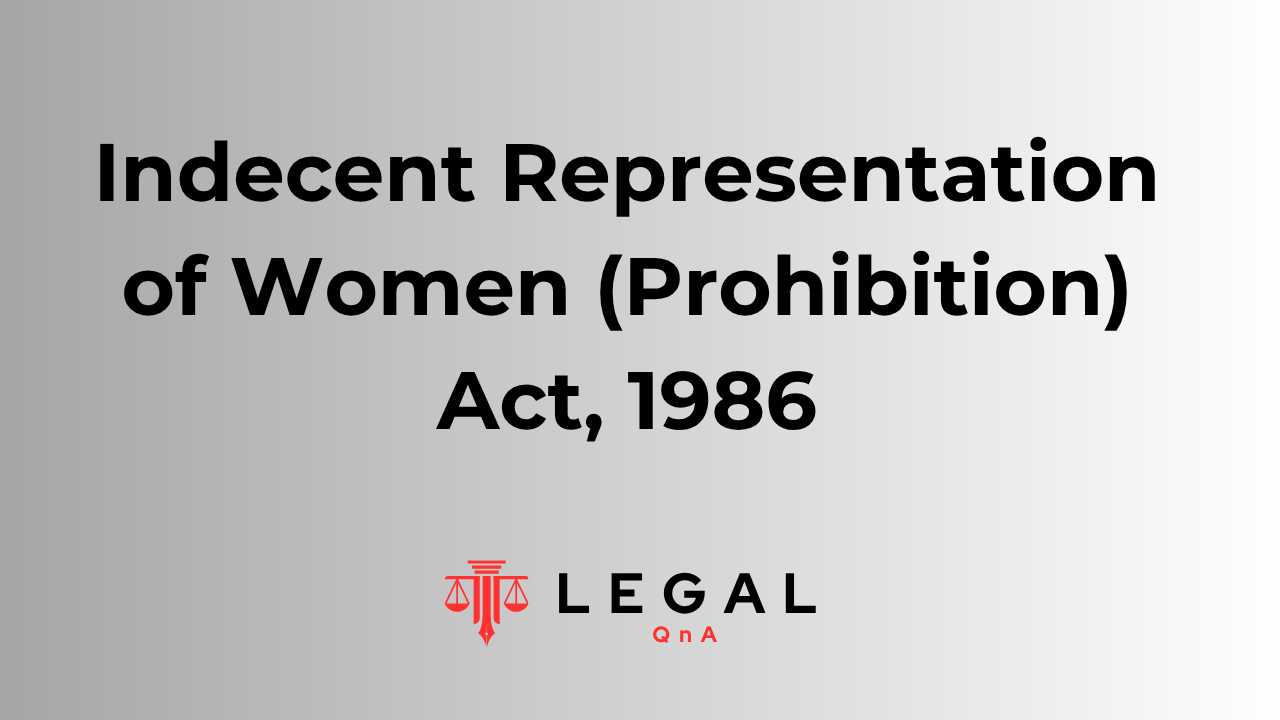The Indecent Representation of Women (Prohibition) Act, 1986 was enacted to stop the indecent or derogatory portrayal of women in advertisements, publications, writings, paintings, figures, or any other form of media. Its primary aim is to protect the dignity of women and to prevent depictions that could corrupt public morality or lower respect for women in society.
The Act applies throughout India and came into force on 2 October 1987. It defines indecent representation of women as any depiction of a woman’s form or body in a way that is indecent, denigrating, or likely to harm public morals. It also defines advertisement broadly to include any notice, label, wrapper, or visual representation made by light, sound, smoke, or gas.
The law makes it illegal for anyone to publish or participate in the publication of advertisements or materials that contain indecent representations of women. It also bans the production, sale, distribution, or circulation of books, pamphlets, films, or drawings that depict women indecently.
However, it allows exceptions for materials created for the public good, such as those related to art, science, literature, or religion. Religious depictions and films regulated by the Cinematograph Act of 1952 are also excluded.
To ensure enforcement, the Act gives powers to certain government officers to search premises, examine documents, and seize any materials that violate its provisions.
These searches must follow the procedures of the Criminal Procedure Code, and no private home can be entered without a warrant. Officers must report any seizures to a magistrate for further action.
Violating the Act can lead to punishment. On the first conviction, a person may face up to two years in prison and a fine of up to two thousand rupees. For later offences, imprisonment can extend up to five years with a fine between ten thousand and one lakh rupees.
When an offence is committed by a company, both the company and those responsible for its operations can be held liable unless they can prove they acted without knowledge or with due diligence.
Offences under this Act are considered cognizable and bailable, which means that police can make arrests without a warrant, but bail can be granted.
Government officers acting in good faith under the Act are protected from legal proceedings. The Central Government is also empowered to make rules for implementing the Act, including procedures for seizure and reporting.
